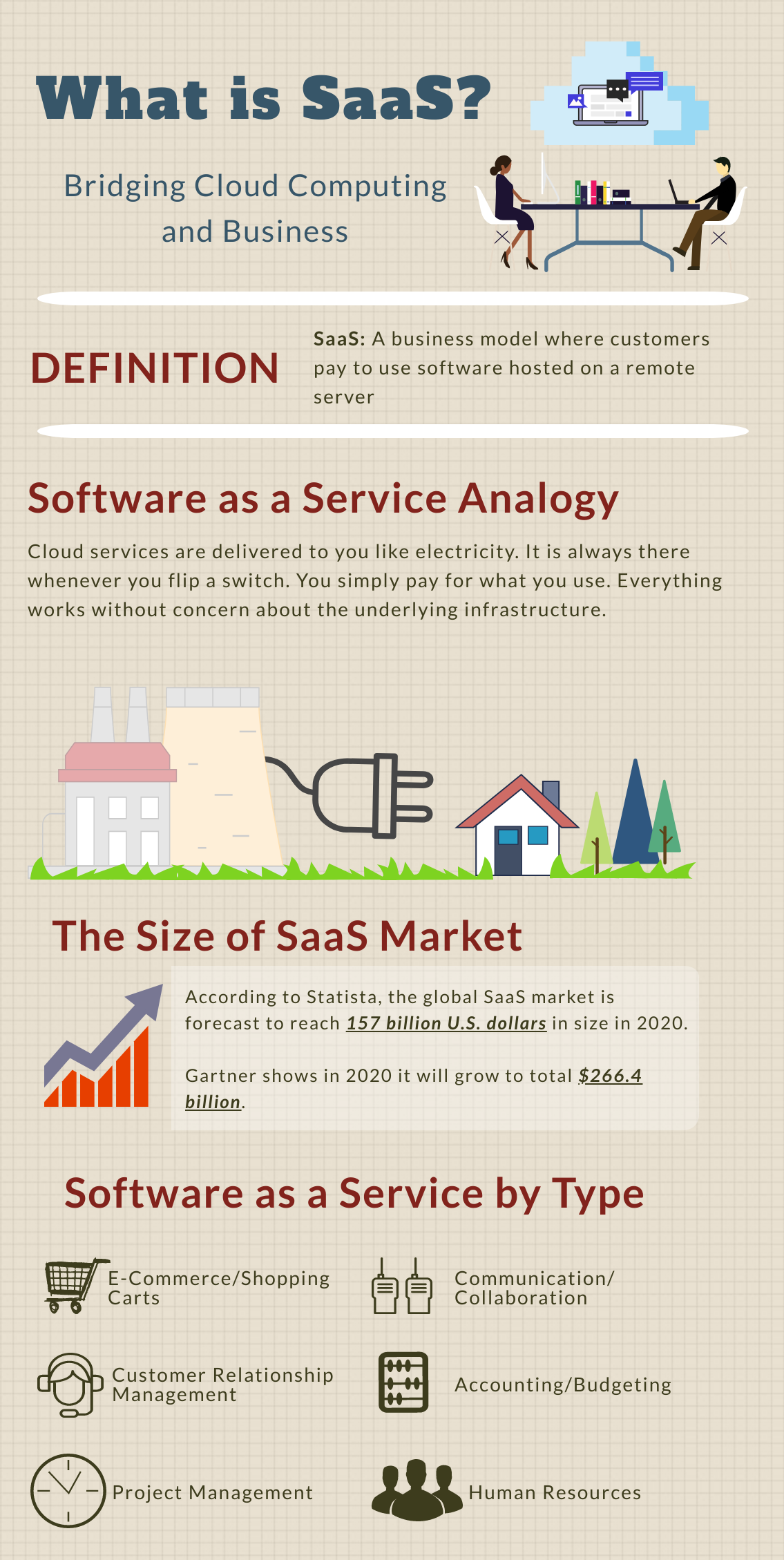At the time of writing this article, I came across the opinion that Software as a Service is a hackneyed topic and there is nothing new. Such a view, of course, may be applied. But Statista tells me that the SaaS market volume doubled since 2014. Google Trends show me that search interest varies between 60 and 100 points from 2014. Nasdaq indexes the market value of cloud companies is growing, which means the SaaS market is developing. In the IT world, SaaS is an evolution of high technology and this technology is developing, regardless of anyone's opinions.
If you are considering transforming your web application into SaaS, or choosing SaaS for business, or trying to find robust and experienced SaaS developers, or just want to deal with this incomprehensible acronym this article explains SaaS in simple words.
From the very beginning
To understand cloud services, SaaS in particular, and all the charms they bring, we need to look at the predecessor - licensed software.
This is how things were before the advent of SaaS. You have a business, say a real estate agency. Your agency flourishes and you are looking for ways to improve it. And you purchase software for maintaining a database of listings, a customer database, tracking transactions and accounting for agents.
Then you need to buy a server, a set of computer hardware that you do not understand, and then hire specially trained people to put all hardware together and to install the software on the server, which means additional expenses for expanding the staff and acquiring hardware and a license for the server operating system.
Further, this software must be installed on each working computer and customized to your needs. And what does customization mean? This means those tech guys you have hired need to rewrite parts of the program code. And now standard updates from developers are no longer suitable for you because they do not contain those improvements and customizations that you have made, it can destroy part of your data.
In the case of SaaS, you get access to the necessary functions via the Web, bypassing the purchase, installation and customization of the software described above. All that is required of you is to find a provider, roughly speaking, the lessor of the software you need.
The concept of rent is not new for an entrepreneur. The ability to take something for use on time for a fee was always. Today it has acquired new forms. The essence of the transition from acquiring ownership to leasing for a while is simple: if a thing is rarely needed or requires tremendous effort in setting up and maintaining, it is better to leave it to professionals. If you need to move - you hire movers, and not buy a truck, if you have problems with the wiring - you call an electrician and do not go to get the appropriate qualifications. The same things are with software in the context of cloud computing if you buy them as a service. If the business needs to close some technical need, it is better to find a contractor, rather than deploy a new IT department.

Difference between SaaS and Web Application
In the vastness of the Internet, sometimes you can find "cloud application" and "web application" used as synonyms. But they are not quite fully interchangeable. These terms belong to two different categories. When we talk about a SaaS app we mean an app with a specific software delivery model. And this software commonly can be delivered via the web app, but not mandatory. Slack, which is a SaaS communication service, has web, desktop and mobile applications. Whereas by web app is meant a client-server computer program.
So why does a question on the difference between SaaS and web based application arise at all?
Such confusion arises because these two deliver a lot of the same results. Both provide you access to online service via the Internet. Both have an application-like user interface and generate content based on the user's request. Both don't require you to install apps on a device. But their core points are different.
Every SaaS app can be a web app, but not every web app is a SaaS app. Which begs the question: how to convert web application to SaaS?
What software can be transformed into SaaS
A basic feature of the SaaS concept is providing the functionality of one instance software to different customers by subscription via the Internet. This, therefore, means that not every existing software product can be converted to SaaS. If you want to develop SaaS that people will love, you should know several requirements for software to become a SaaS.
Since it is software delivered under a subscription model to organizations where further it will be used by groups of employees within the same company, it requires a different business model. As for a technical part, the SaaS platform architecture (a set of interaction rules, combined to perform some functions) is initially created bearing in mind the prospect of multitenancy and scalability.
In a multitenant architecture, software apps work simultaneously with several configurations and data sets of several organizations, and each tenant (client-organization) works with its instance of a virtual application, seeing only its configuration and its data set.
Then, the software must maintain scalability. The customer using the minimum pricing plan and the customer using the maximum should receive the same level of service. At the same time, the change in the pricing plan must not affect productivity.
Thus, turning a web app into SaaS app needs a revision of a business model and platform architecture.
But am I not late with my SaaS startup in 2020?
SaaS companies provide a unique investment opportunity. Software as a service startups are of great interest to angel investors and venture capitalists because the money invested pays off quickly. This is because getting customers to pay more than, let's say, just for easy math, $100 for a license can be a daunting task, as a rule, they are much more willing to pay $10 per month for access to this software. As a result, by the end of the year, the SaaS startup's profit is 20% higher - in 12 months the customer spent $120, while in the case of a licensed software the profit is only $100. Thus, on the basis of renewable profit the investor can easily assess the position of the SaaS startup.
The SaaS companies that have found their product fit and got funded continue to grow at an exceptional pace. For a couple of years software-as-a-service startups achieve impressive results and change the SaaS world as we know it. Dixa, a customer service platform, was launched globally in 2018 and since then it's monthly revenue has grown by 1.800%. TravelPerk, a business travel management SaaS platform, was founded in 2015 and in 2019 it was announced the fastest growing SaaS company.
Why will SaaS continue to be in demand?
Everything digitalizes. If even tea kettles have simple software with which you can control them, what we can say about businesses. Companies will continue to need software that can improve their performance and reduce non-core costs. And this is exactly what SaaS offers.
The reasons to launch new SaaS startups lie in the advantages that SaaS brings for small, medium companies and corporations over the old model - purchase with a license:
-
Cloud technologies don't require much computing power and are cost-effective.
-
Ease of use. Customers get access to the desired functionality by login instantly. That is, there is no need to install the program on your computer and then customize it. If we are talking about personal use, then this can still be quickly dealt with, and if this is a business, it will take a lot of time, and it requires specially trained employees.
-
You pay for what you use. A product with a license has enormous potential, which you can not even suspect because you will use only what you need for work. It is as if you bought a tea set for 24 people to use only 1 cup. You do not overpay for what you do not use.
-
Scalability. If a customer needs more features he just upgrades to a new pricing plan. It works in the opposite direction - the need for a function has disappeared - change the pricing plan.
-
Remote access. From any device - a mobile phone, laptop or tablet - no problem, a customer gets access from anywhere with an Internet connection.
-
No-fuss, no bother. When installing, there are always questions about support and maintenance. And if a program crashes? How to ensure data security? Where should the server be located? And who will do this? With SaaS, such questions do not arise for customers.
Things that need special attention when developing SaaS
Companies considering the advantages of cloud technologies, also look at the risks associated with SaaS - software security and performance. Therefore while developing SaaS solution make security and performance your top priorities.
The customer's fear is understandable. All information is on a remote virtual server that does not belong to a user and to which he does not have direct access. He can not affect the software performance eather. Since users can not control hardware and software processing their information, they want to ensure 100% security.
Developers must take care of security-related issues on the discovery stage, before they write the first line of the SaaS product code. The key to SaaS security lies in providing the user with exactly as much information as necessary and following the latest cloud security standards, which include encryption, anti-virus and hacker protection tools.
The next thing to think ahead is updates. Updates should be seamless for users. The customer chooses SaaS to forget about the problems of software upgrades, which may cause a loss of performance, which need customizations or which make him adapt to changes that he did not ask for. Upgrades should be provided as a part of service and planned out in advance.
As for confidentiality, it should be ensured along the whole chain, including you, as a SaaS provider and a consumer. You can provide customers an additional measure to ensure data confidentiality that is to encrypt data before sending it to a virtual server. Finally, the customer is not relieved from ensuring the security of his own information perimeter and excluding the transfer of access rights to information to third parties.
Wrapping up
The well-known “There is an app for that” in the business area equals “There is a SaaS for that”. Cloud technologies are useful for small, mid businesses and big corporations and are in great demand.
Hope this article will be helpful and will dispel your doubts about whether to start a SaaS startup. If you want to convert your web app into SaaS, or want to create a SaaS app from scratch you can always write to our specialists. Thank you for reading.





